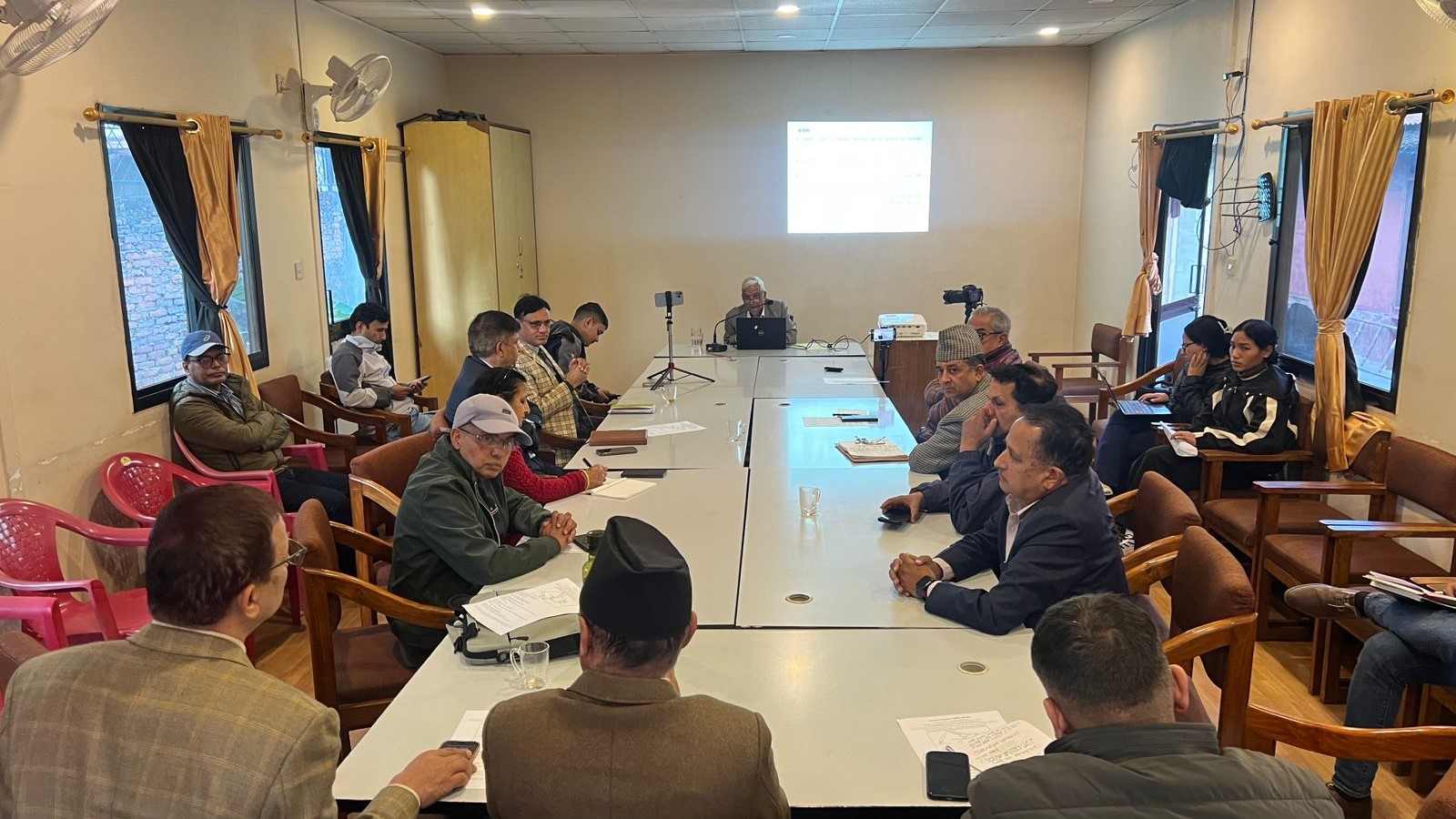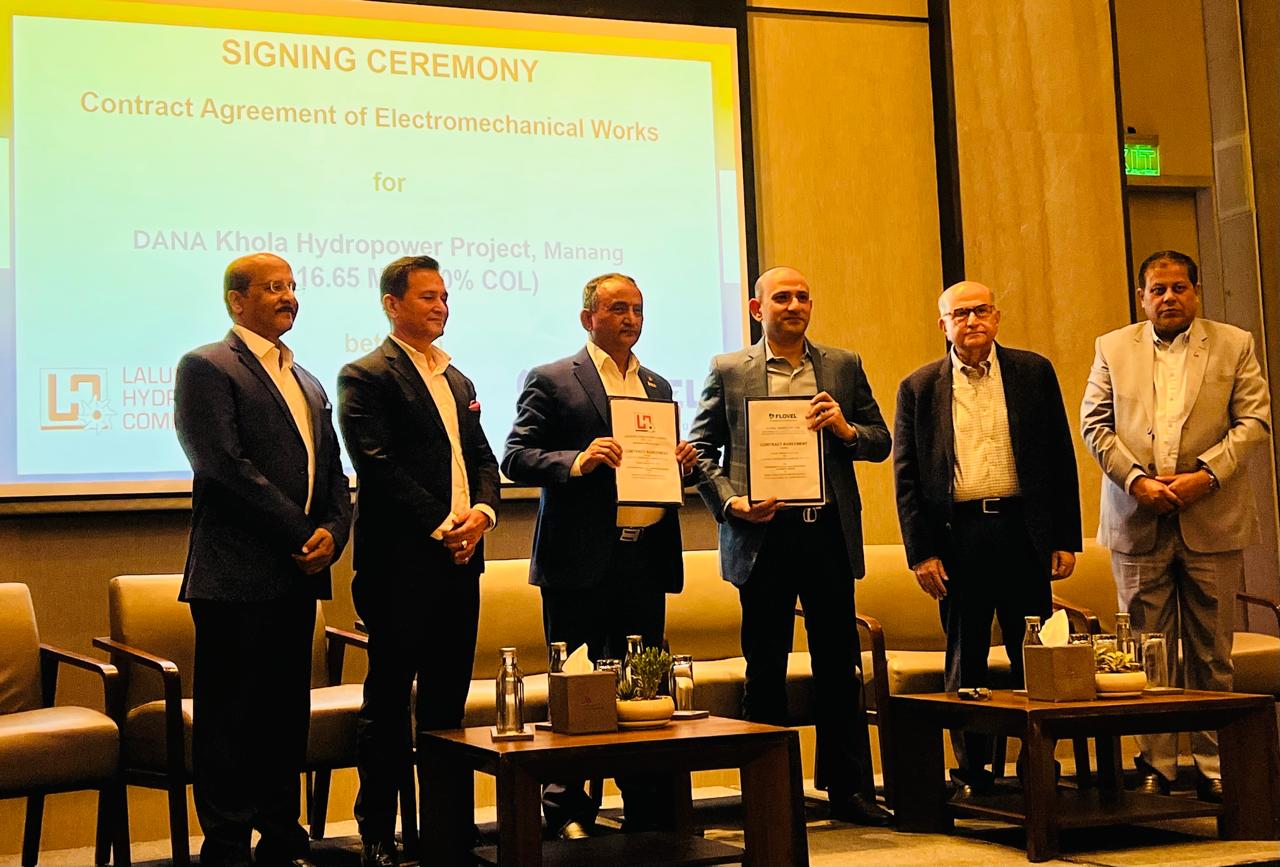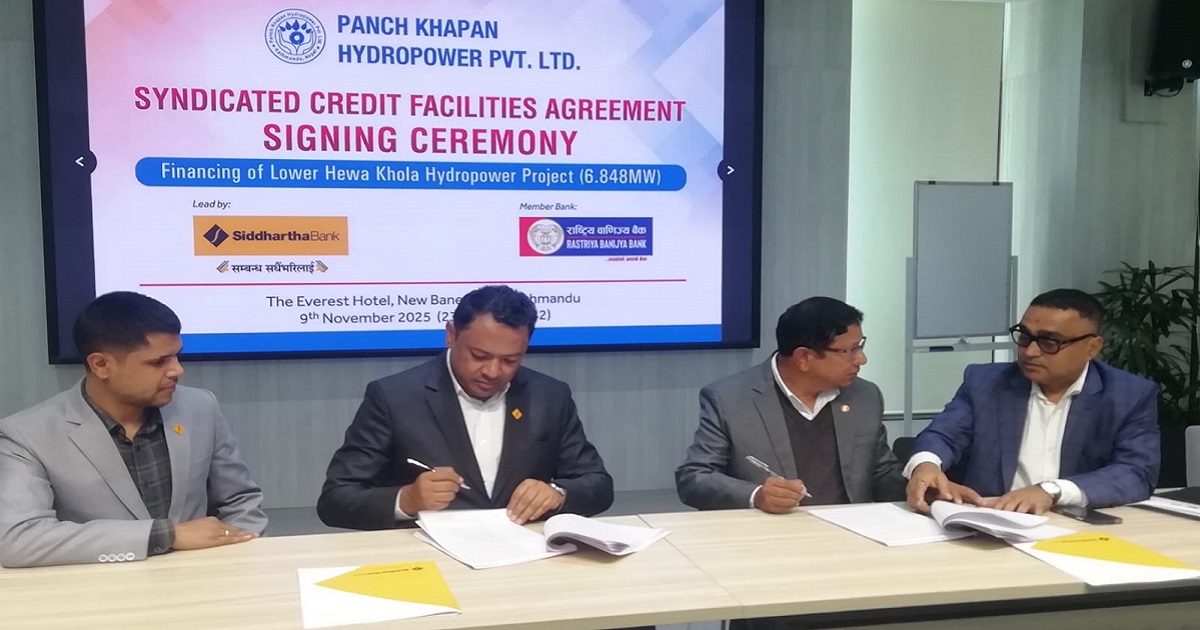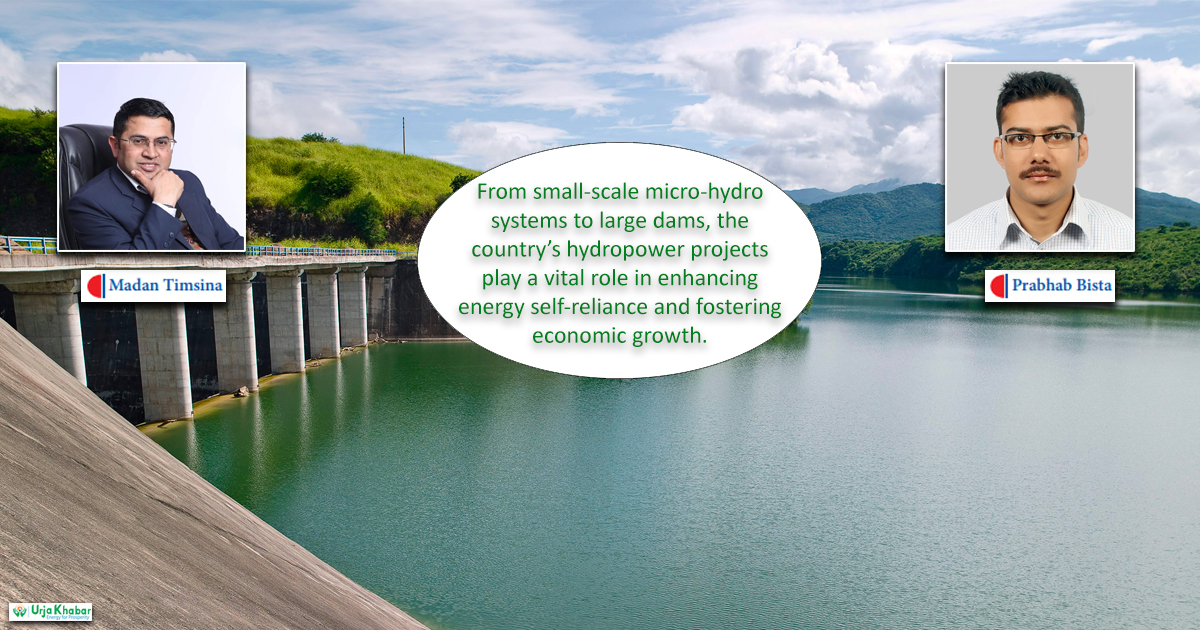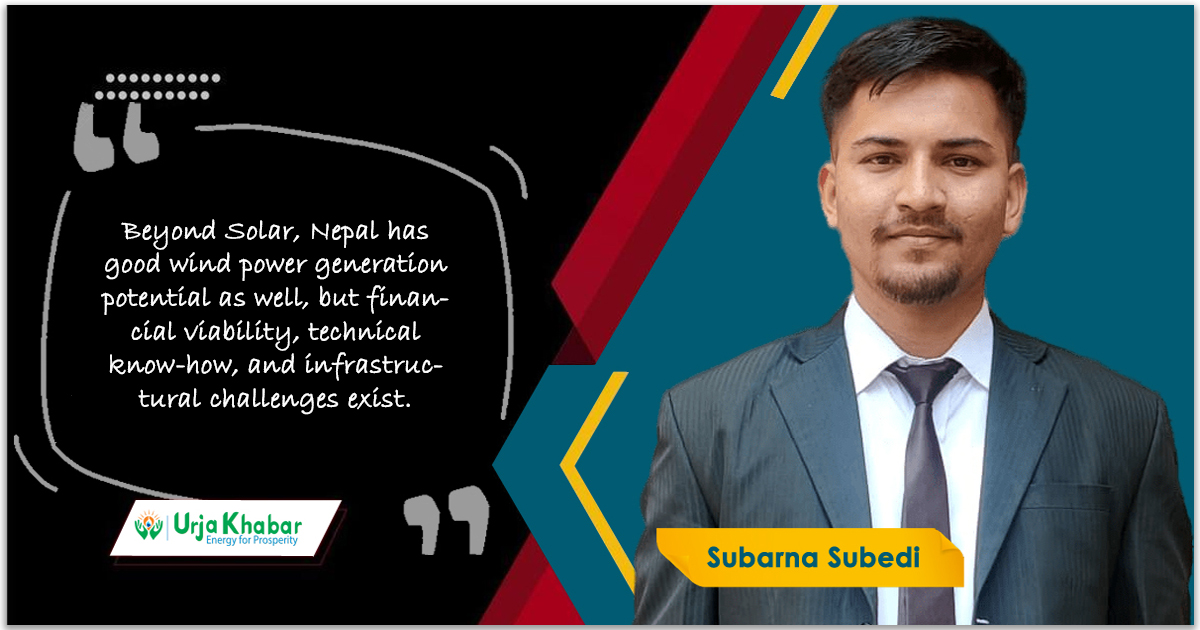Energy Update
Integrating Solar PV with Hydropower Projects: A Pathway to Sustainable Nepalese Future
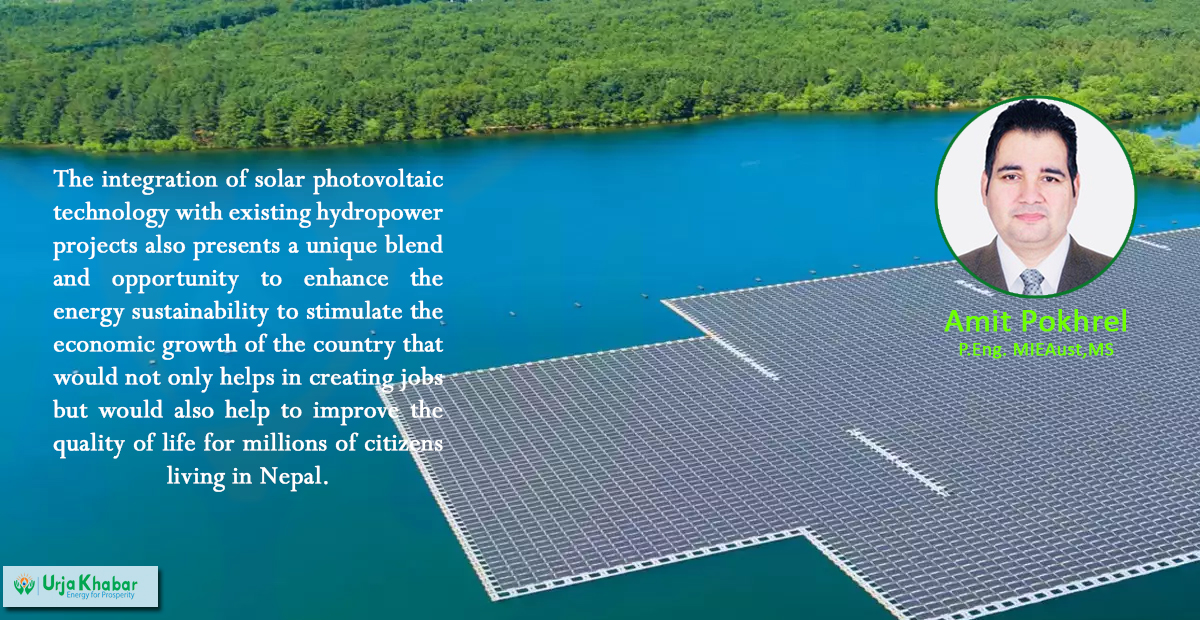
Our country Nepal is blessed with rich water resources and sunlight that stands at a pivotal juncture in its sustainable energy development goals. The subject for this article is a blend of modern and innovative ideas that would help the Nepalese to focus toward a sustainable future. This article is prepared taking consideration of the energy principles that would cater growth of the underdeveloped to the developing country. The integration of solar photovoltaic technology with existing hydropower projects also presents a unique blend and opportunity to enhance the energy sustainability to stimulate the economic growth of the country that would not only helps in creating jobs but would also help to improve the quality of life for millions of citizens living in Nepal.
I am trying to explore some of the potential of this holistic approach focusing on the benefit for the government, the private sectors, the local and rural communities while providing actionable recommendations that would benefit all the people who are developing in terms of developers, investors, and all stakeholders. We need to understand the use of the energy resources that would not only cater business plans but also helps us to focus on the dual approach that would help the government and the private sector to develop the electricity for common use that would support the economic development of the country.

The development of this modality shall benefit the educated people that would be very helpful in creation of thousands of vacancies that would be more attracted towards construction, project operation and commissioning. Due to this practice, the local economy will boost that would be beneficiary for communities in terms of sustainable income opportunities that would help the families to grow together. In addition to this, the solar energy can be used to harness the traditional and natural irrigation system that would enable farmers to increase crop yields and agricultural practices.
I believe this is crucial in a country like Nepal whose primary source of livelihood is agriculture for a significant portion of the Nepal’s population. I also believe that due to such integration, the solar PV plant can facilitate rural electrifications, providing electricity to the required places in the rural areas like hospitals, schools, government offices, and the living community. Due to this access, the energy can improve the educations outcomes, enhance healthcare management services and elevate the overall quality of life in the rural communities.

To support the view of the article in terms of dual approach to develop solar and hydropower alongside, there are so many examples that have happened globally. There are floating solar panels that can be installed on the surface of hydropower reservoirs, surface powerhouse, the location of the terrain which can be developed in the same vicinity utilizing the space above the water without interfering with water flow and land use. Developing this methods not only reduce evaporation but also can improve the efficiency of both solar and hydropower generation.
Some of the international examples are the Kakrapar Atomic Station, India; Yamakura dam, Japan; San Diego’s floating solar project, Nantong, China; Pangong lake, India; Sungrow floating solar project China, lake Neusiedl Austria, Taal lake Philipines, Brahmaputra River, India, Sundarbans, India, lake Victoria Uganda, Kuwait’s floating solar initiatives, California’s floating solar farms etc. The above defined example also illustrates the potential for integrating solar technology with hydropower projects ensuring that the cultivable lands remains available for food generation if that is related to the irrigation while maximizing renewable energy outputs. The policy makers can think on this strategy to preserve the lands for the agricultural production without affecting the developments that can also initiate in further policy development in Nepal to prioritize the economic growth in adopting new and sustainable technologies.

(Photo source: Google-floating solar in the Reservoir)
The policymakers, bureaucrats and investors shall need to focus on the strategic recommendation that shall incentivized public private partnership modality to focus on the long-term development to develop our nations with the help of the investors and all interested stakeholders so that we can support economic growth in our countries for millions of people that can take advantages from the modern development support. The policymakers must also establish clear regulations and guidelines that facilitate the integration of solar PV with hydropower projects in the occupied land and in the dam areas that would not also benefit the development but would be a single point for the transmission lines as a hybrid modality to connect in the grid that would help us to focus on achieving the 10, 000 MW in ten years.
The government shall implement sustainable development strategies by initiating pilot projects that combine solar PV with existing hydropower facilities that can serve as a proof of a concept. For example, the government can take a lead in addressing the solar plant into same hydropower projects like Upper Tamakoshi Hydropower Project as this project can incorporate floating solar panels on its reservoir.
Similarly, there are other projects like Kulekhani hydropower project, Bhotekoshi hydropower project, Marsyangdi, Indrawati, Sunkoshi, Trishuli, Seti River, Karnali hydropower, West Seti hydropower project etc. However, the government must have the strategic flood and landslide management plan to think for such approaches as some areas needs more concentration and several studies to make it possible. I believe that by implementing floating solar along with surface solar modern technology can effectively utilize its water resources for renewable energy generation while addressing the current land issues and promoting economic growth through sustainable practices. This dual practice can significantly contribute to the country’s energy needs and agricultural sustainability that goes hand to hand together for the Nepal’s overall development.
In terms of costing, the average hydropower development cost is around 20 crore per MW cost. If the dual approach shall be taken, the costing would not affect the overall development as the base cost that has been planned for the construction and resource planning would be same (the manpower, material and equipment) that has been planned for the job tasks and can be utilized for the multiple approach that would not only help investors to invest the amount but the developers can take a lots of benefits from such development strategy. There will be much savings for the cost like the transmission line costs that have to be separately arranged for the solar energy would be optimized that would be connected to the nearby substation. Every development can be possible if we plan it for the noble cause for the country.
In continuation of this development strategy, it would help in long term goals and objectives for Nepal whose electricity would be on high demand for the neighboring countries that would sustain millions of lives and would be a source for the revenue generation for the Nepal government from the nearby country. Nepal can also bring its own tariff to trade its electricity that would not only help the government but would also channelized the private sectors and investors to think for the better outcomes that would help to establish industries, better crop production, food securities and ultimately the employment in every provinces. Our people would taste the development and the current situation of job scarcity would also be addressed so that our people should not have to travel Qatar, Dubai, Malaysia, Europe, or any parts of the world for the sake of employment if such development would benefit overall population that would reach the goals of living.
These development projects can demonstrate the feasibility and benefits of such integrations, attracting further investment and interest from stakeholders. Similarly, developing innovative financial models that may include community financing options can help local populations invest in and benefit from these projects. Microfinancing and cooperative models can empower communities to take part in the energy transition that shall be backup by the government strong rules and regulations.
Additionally, enhancing the existing grid infrastructure to accommodate the influx of a solar energy is crucial. Investments in smart grid technologies can facilitate better energy management and distribution, ensuring that both hydropower and solar energy are effectively utilized. In terms of environmental considerations, conducting thorough environmental impact assessments will ensure that the integration of solar PV does not adversely affect local ecosystems. Sustainable practices should be given prioritized to maintain biodiversity and protect natural resources. Therefore, engaging with local and national advocacy groups can help raise awareness about the benefits of the hybrid energy systems. Building a coalition of stakeholders, including environmental organizations, can strengthen the push to supportive and sustainable policies.
In terms of long-term vision, the country like Nepal should encompass a diversified energy portfolio that not only includes hydropower and solar energy but also explores other renewable energy sources such as wind and biomass. This holistic approach can create a resilient energy system capable of meeting the demands of a growing population while addressing climate change challenges in the country.
Therefore, the integration of solar PV with hydropower projects is not just a technical solution; it is a pathway to a sustainable future. There are so many examples that it is possible to install solar PV plants in the hydropower projects particularly through the use of solar panels in the river, dam site or any floating solar panels that would foster the sustainable development which can bring an innovative ideas to utilize the modern concept in this era where many developments is possible in Nepal. In my opinion, this approach can also help maximize energy generation through synchronization pattern of dual approach for the development of the country in making prosper and revenue generation for the government which would help to sustain the country in terms of making itself reliable on the energy system.
By fostering collaboration among governments, private developers, international parties, and other local development communities, we can create a robust energy framework that supports technological innovation, job opportunities, economic growth, environmental sustainability, and social equity. The time is not to think and stay in a traditional approach, the time is to act now, with the right policies and community engagement, our country can lead in innovative energy solutions that not only benefits the lives of Nepal but also the neighboring countries. Nepalese citizen can taste the development in their areas to generate revenue and overall growth of the country to become successful power producer in coming years to sustain the needs of the present and future generation.
The author of this article is the Advisory Executive Committee member of the Fast-Infra Label Global Infrastructure Basel Foundation, Switzerland whose core value is to integrate with Environment, Social and Governance, and resilience considerations for Sustainable Infrastructure.
Conversation
- Info. Dept. Reg. No. : 254/073/74
- Telephone : +977-1-5321303
- Email : [email protected]







